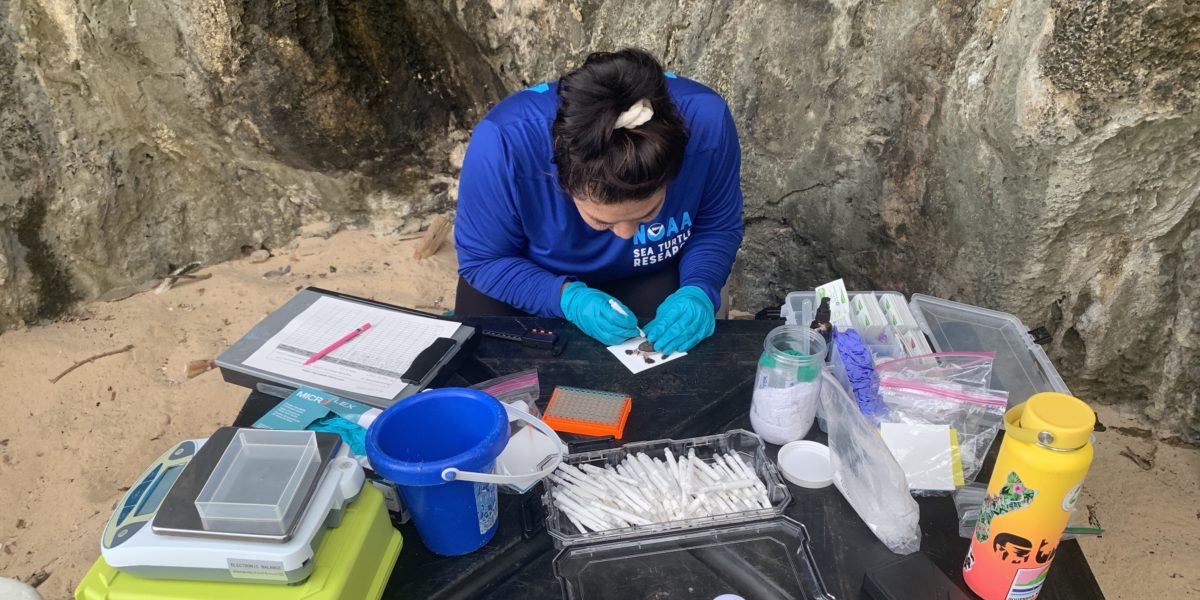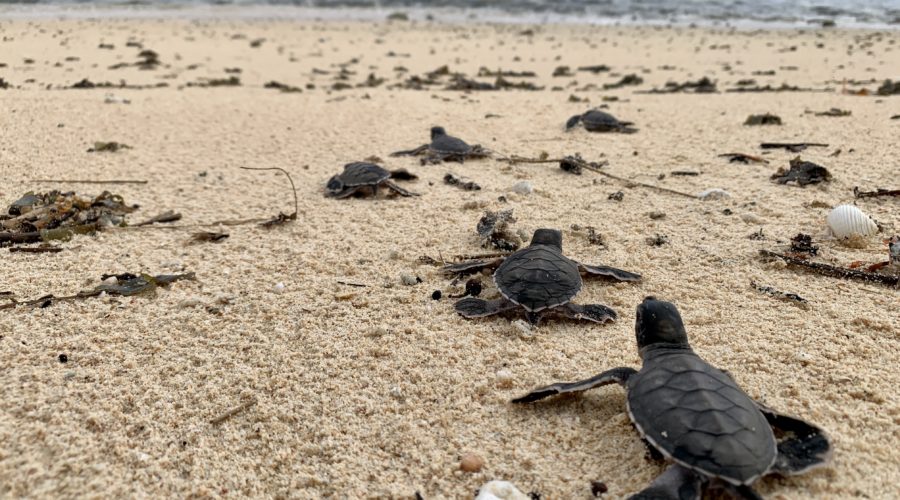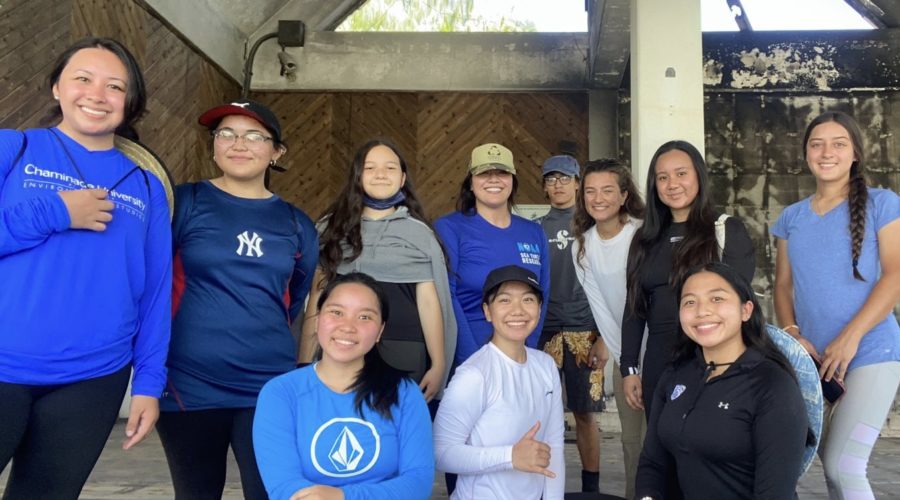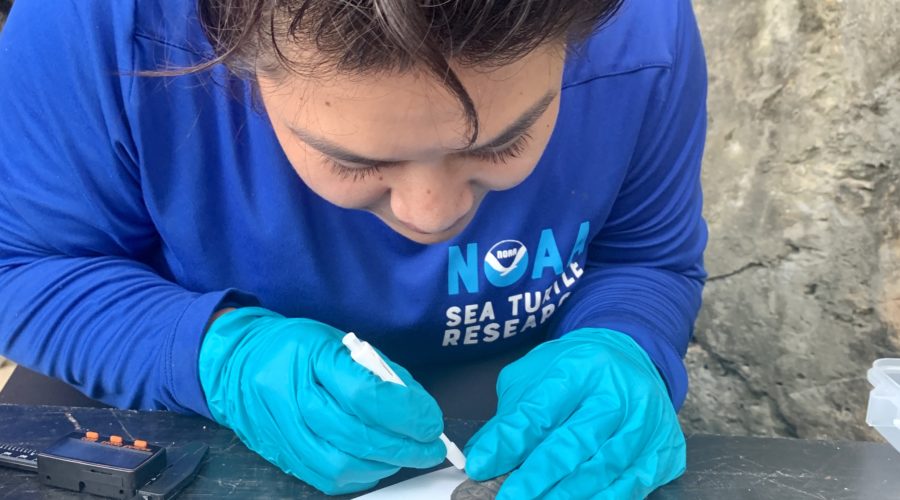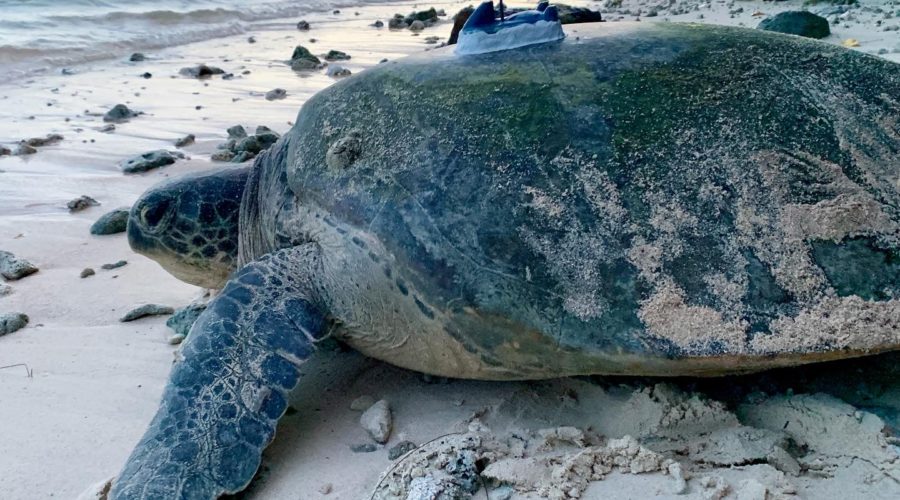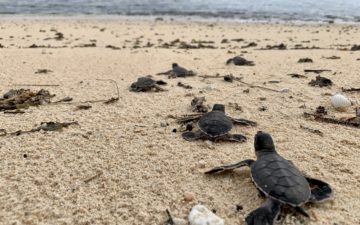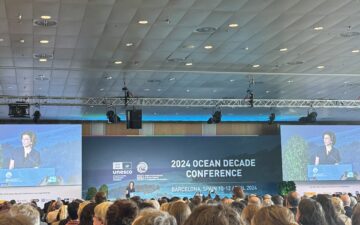Every year, the Boyd Lyon Sea Turtle Fund hosts a scholarship for a marine biology student whose research is focused on sea turtles. This year’s winner is Josefa Muñoz.
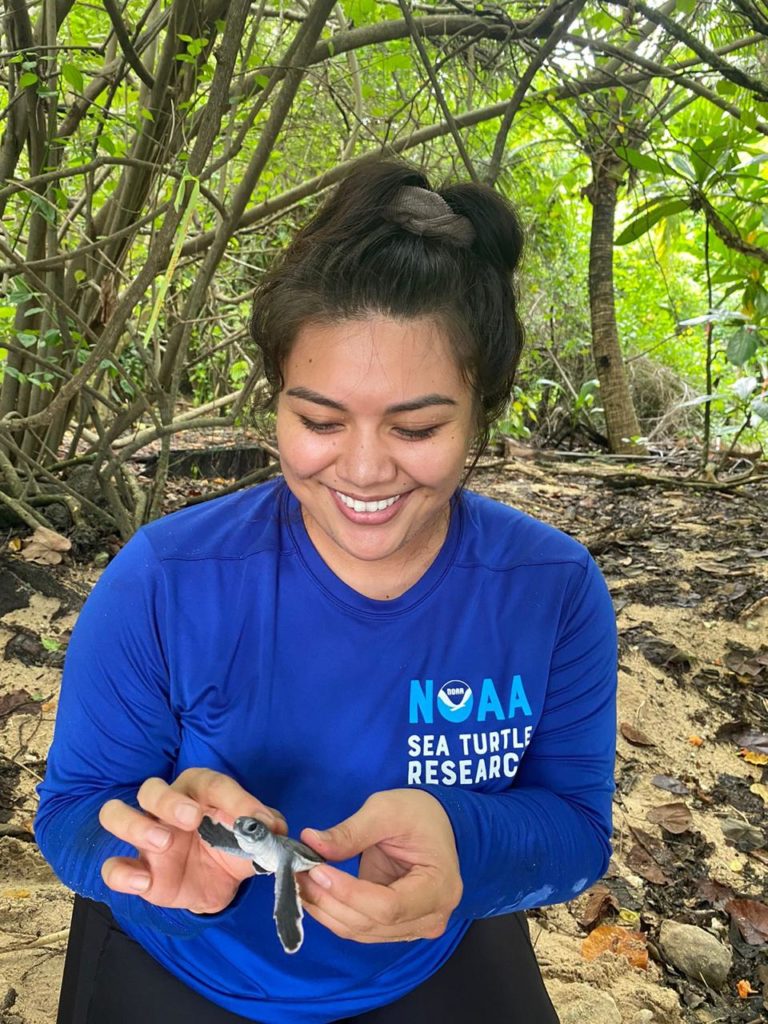
Sefa (Josefa) Muñoz was born and raised in Guam and obtained a B.S. in Biology from the University of Guam (UOG).
As an undergraduate, she found her passion for sea turtle research and conservation while volunteering as Patrol Leader for the Haggan (turtle in the Chamoru language) Watch Program, which focused on monitoring sea turtle nesting activity. After graduating, Sefa worked as a sea turtle biologist and was certain she wanted to advance knowledge on U.S. Pacific Island Region (PIR) green sea turtles (Chelonia mydas). As a National Science Foundation Graduate Research Fellow, Sefa is now a Marine Biology PhD student advised by Dr. Brian Bowen at the University of Hawai‘i at Mānoa (UH Mānoa).
Sefa’s project aims to use satellite telemetry and stable isotope analysis (SIA) to identify and characterize key foraging areas and migration routes used by green turtles that nest in the U.S. PIR, which includes American Sāmoa, the Hawaiian Archipelago, and the Mariana Archipelago. Isotopic values of food are registered in an animal’s body tissue as nutrients accumulate from the diet over a long period of time and thus stable isotope values of animal tissue are indicative of its diet and the ecosystem in which it forages. Therefore, stable isotope values can reveal an animal’s previous location as it travels through spatially and isotopically distinct food webs.
SIA has become an accurate, cost-effective method for studying elusive animals (e.g. sea turtles).
Although satellite telemetry offers more precision in locating the feeding habitat of post-nesting turtles, it is expensive and generally produces information for only a small subset of the population. The affordability of SIA allows for a larger sample size that is more representative at the population level, which can resolve foraging hotspots used by most of these post-nesting green turtles. SIA paired with telemetry data has emerged as an integrative approach to determine foraging hotspots of sea turtles, and the latter can be used to resolve migration routes. Together, these tools can help determine priority locations for conservation efforts for threatened and endangered green turtles.
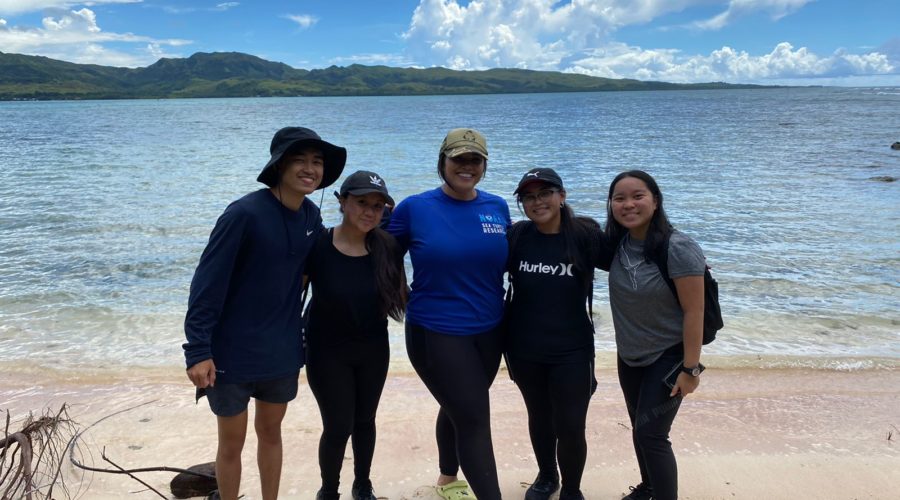
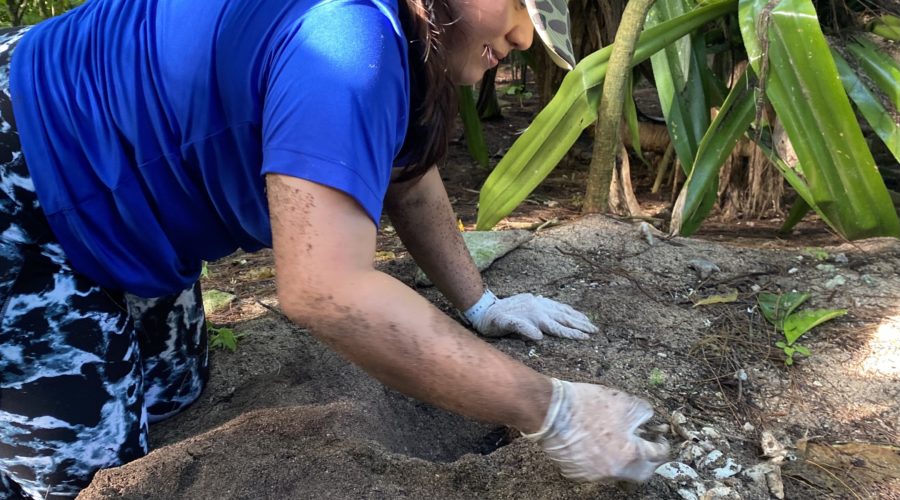
In collaboration with the NOAA Fisheries’ Pacific Islands Fisheries Science Center Marine Turtle Biology and Assessment Program, Sefa has deployed satellite GPS tags to nesting green sea turtles in Guam as well as collected and processed skin tissue samples for SIA. The precision of GPS coordinates from satellite telemetry will help infer green turtle migration paths and foraging habitats and validate SIA accuracy, which has yet to be done in the U.S. PIR. In addition to this project, Sefa’s research focuses on green sea turtle inter-nesting movements around Guam. Also, similar to Boyd Lyon’s research priorities, Sefa intends to gain insight on male sea turtles by studying the mating strategies and breeding sex ratio of Guam’s green turtle population.
Sefa presented preliminary findings of this study at three scientific conferences and provided outreach to middle school and undergraduate students in Guam.
During her field season, Sefa created and led the 2022 Sea Turtle Research Internship where she trained nine students from Guam to independently conduct beach surveys to record nesting activity and to assist in biological sampling, identification tagging, satellite tagging, and nest excavations.
